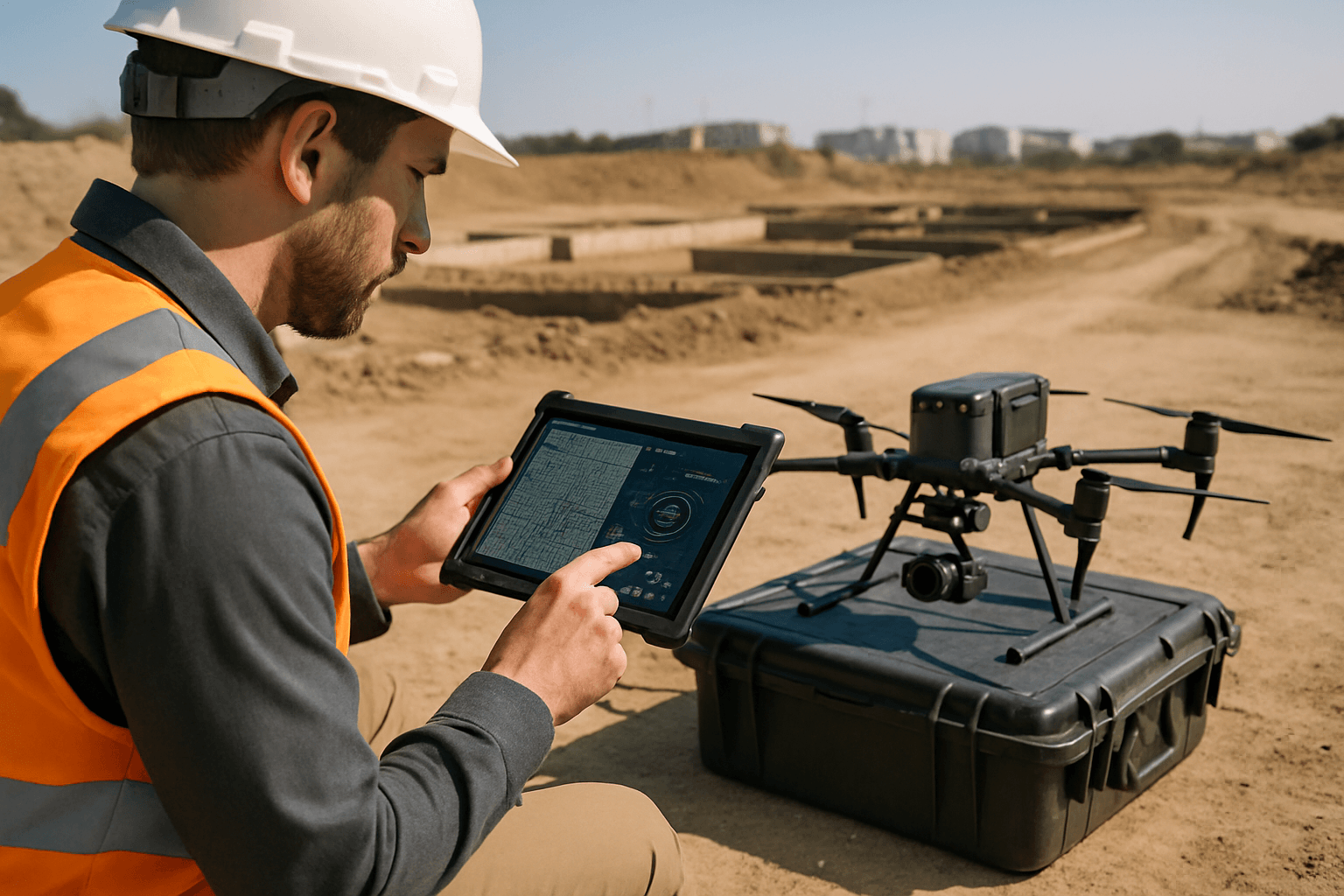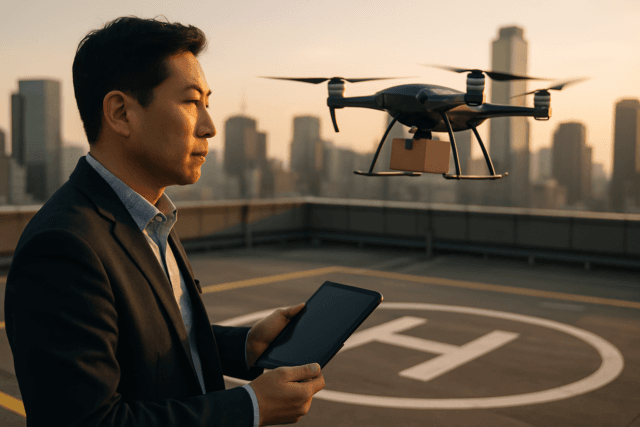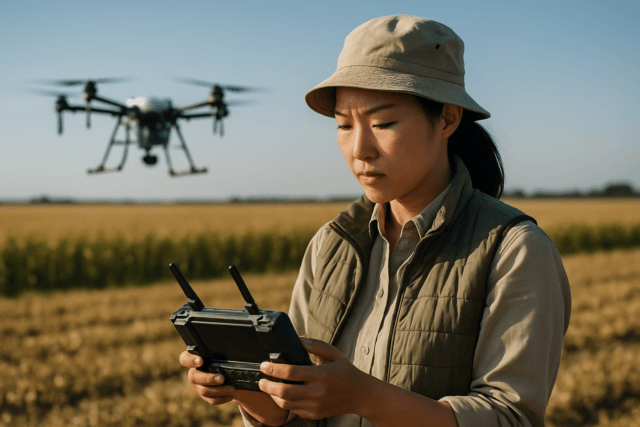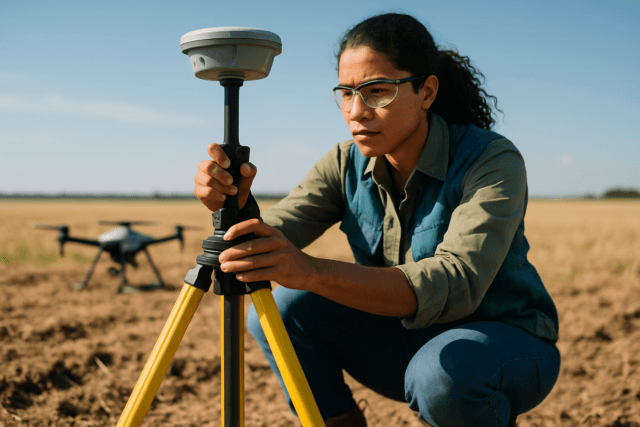Consider, for a moment, the seemingly mundane act of pinpointing a location on a digital map. A tap on a smartphone, and there you are, often within a few meters. This everyday magic, powered by Global Positioning Systems (GPS), feels ubiquitous, almost effortless. Yet, when the stakes involve precise measurements for construction, agriculture, or environmental monitoring—when a few inches can translate to thousands of dollars in profit or a critical miscalculation in design—that everyday magic suddenly faces an unforgiving scrutiny. For the burgeoning field of aerial mapping, where drones are rapidly replacing traditional survey methods, the seemingly simple question of “how accurate is the GPS?” unveils a complex interplay of technology, environmental factors, and specialized techniques that define the very utility of the data collected.
The Foundation: Understanding Standard GNSS and Its Limits
At its core, GPS is a component of a larger system known as Global Navigation Satellite Systems (GNSS), which includes various satellite constellations like GLONASS, Galileo, and BeiDou. Drones, like your smartphone, are equipped with GNSS receivers that listen for signals from these orbiting satellites to calculate their position. This basic positioning, often referred to as “standard GNSS” or “single point positioning,” provides location data with an accuracy typically ranging from ±1 to 3 meters, and sometimes up to ±5 meters horizontally and ±3 to 10 meters vertically. While sufficient for general navigation or casual photography, this level of accuracy falls far short for professional aerial mapping applications where centimeter-level precision is often required.
The limitations of standard GNSS stem from several factors:
- Atmospheric Interference: Signals from satellites travel through the Earth’s ionosphere and troposphere, which can cause delays and refractions, leading to errors.
- Satellite Geometry (DOP): The spatial arrangement of visible satellites significantly impacts accuracy. If satellites are clustered closely in the sky, it results in a high Dilution of Precision (DOP), which reduces accuracy.
- Multipath Interference: GPS signals can bounce off surfaces like buildings, water, or dense vegetation before reaching the receiver, creating “false” signals and positional errors. This is particularly common in urban environments or areas with complex terrain.
- Receiver Quality: Consumer-grade GPS modules found in many drones are less precise than the high-accuracy systems used in professional surveying equipment.
These inherent challenges necessitate advanced techniques to elevate drone GPS accuracy to the “survey-grade” levels demanded by professional mapping.
Elevating Precision: RTK and PPK Technologies
To overcome the limitations of standard GNSS and achieve centimeter-level accuracy, aerial mapping professionals turn to Real-Time Kinematic (RTK) and Post-Processed Kinematic (PPK) technologies. Both methods enhance positional accuracy by correcting GNSS errors, fundamentally transforming the utility of drone-collected data.
Real-Time Kinematic (RTK)
RTK systems work by providing real-time corrections to the drone’s GPS data as it flies. This involves:
- Base Station: A stationary GNSS receiver (base station) is placed at a known, precisely surveyed location on the ground.
- Correction Signals: The base station continuously receives satellite signals and calculates the errors in the raw GPS data. It then transmits these correction signals, typically via radio link or cellular network, to the drone in real-time.
- On-board Processing: The RTK-enabled drone, acting as a “rover,” receives these corrections and applies them on-the-fly, allowing it to adjust its position and achieve centimeter-level accuracy (typically ±1-2 cm) during the flight.
Advantages of RTK:
- Immediate Results: Since corrections are applied in real-time, RTK provides immediate access to accurate data, which is ideal for time-sensitive applications like construction progress tracking or emergency inspections.
- Real-time Feedback: Pilots can monitor the accuracy of their positioning during the flight, receiving alerts if a fixed solution is lost.
Disadvantages of RTK:
- Connectivity Dependence: RTK relies on a stable, continuous communication link between the drone and the base station. If this connection is lost due to terrain obstacles, signal interference (e.g., near power lines), or network outages, accuracy can suffer mid-flight.
- Equipment Cost: While costs have decreased, RTK systems still require specialized and often more expensive equipment.
Post-Processed Kinematic (PPK)
PPK offers an alternative to RTK, also achieving centimeter-level accuracy, but by applying corrections after the flight.
- Independent Data Collection: Both the PPK-enabled drone and a base station (or a Continuously Operating Reference Station – CORS network) independently record raw GNSS data during the mission.
- Post-Processing: After the flight, the raw data from both the drone and the base station are combined and processed using specialized photogrammetry software. This post-processing corrects for errors introduced by atmospheric conditions, satellite orbit deviations, and multipath effects, leading to highly accurate geospatial information.
Advantages of PPK:
- Robustness and Reliability: PPK does not require a live connection during the flight, making it more resilient to signal loss and ideal for operations in remote areas, challenging terrains (e.g., mountainous regions, dense forests, or urban canyons), or environments with limited connectivity.
- Higher Accuracy Potential: In some cases, PPK can offer slightly higher accuracy than RTK, as it allows for more sophisticated error correction during post-processing and can leverage data from multiple reference stations.
- Flexibility: Data can be collected and processed later, offering greater flexibility in mission planning.
Disadvantages of PPK:
- Delayed Results: The need for post-processing means that results are not available in real-time, which can be a drawback for time-sensitive projects.
- More Involved Workflow: Requires additional steps for data download, processing, and coordination between drone and base station data.
Both RTK and PPK significantly reduce the reliance on Ground Control Points (GCPs) for achieving high accuracy, though GCPs can still be used to further refine and validate data.
The Indispensable Role of Ground Control Points (GCPs)
Even with advanced RTK and PPK systems, Ground Control Points (GCPs) remain a critical component for achieving and validating high-accuracy aerial mapping. GCPs are precisely surveyed physical markers placed on the ground within the area of interest.
How GCPs work:
- Known Coordinates: Each GCP’s exact coordinates (latitude, longitude, and elevation) are measured using high-precision GNSS equipment, independent of the drone’s internal GPS.
- Reference Points: During photogrammetric processing, these known ground points are identified in the aerial images. The mapping software then uses these reference points to “anchor” and align the drone imagery with real-world coordinates, correcting for distortions and errors.
Why GCPs are crucial:
- Absolute Accuracy: GCPs are essential for achieving high absolute accuracy, ensuring that the drone map aligns precisely with global coordinate systems and true ground locations. This is vital for applications requiring precise positioning, such as land surveying, construction planning, and infrastructure development.
- Error Correction and Validation: GCPs help identify and correct systematic errors, such as sensor biases and distortions, and are crucial for validating the overall accuracy of the drone-derived data. Checkpoints, which are similar to GCPs but not used in the processing, serve specifically to verify accuracy.
- Supplementing RTK/PPK: While RTK/PPK can reduce the number of GCPs needed, they do not entirely eliminate their necessity, especially for large or complex sites, or when “survey-grade” legal accuracy is required. GCPs act as a safeguard, ensuring the highest possible accuracy.
Absolute vs. Relative Accuracy: A Critical Distinction
Understanding GPS accuracy in aerial mapping also requires distinguishing between two key types:
- Relative Accuracy: This refers to how accurately points are positioned relative to each other within the same dataset. A map with high relative accuracy might correctly measure the internal dimensions of a building, but the entire map could be slightly shifted from its true global position. This is important for tasks where internal consistency is paramount, such as stockpile volume calculations, progress monitoring over time, or measuring distances between features within a single site. Many standard GPS drones can achieve good relative accuracy.
- Absolute Accuracy (Global Accuracy): This measures how closely a mapped location matches its true position on the Earth’s surface in a global coordinate system. High absolute accuracy ensures that the data aligns precisely with real-world GPS coordinates and known benchmarks. This is critical for projects requiring precise geo-referencing, legal compliance, or integration with existing geospatial databases, such as topographic mapping, land development, and civil engineering. Achieving high absolute accuracy typically requires RTK, PPK, and/or GCPs.
The choice between prioritizing relative or absolute accuracy depends entirely on the project’s specific requirements and intended outputs.
Factors Influencing Drone Mapping Accuracy Beyond GPS
While GPS technology (including RTK and PPK) and GCPs are foundational, several other factors contribute significantly to the overall accuracy of drone-derived aerial maps and 3D models:
- Camera Quality and Sensor: High-resolution cameras (e.g., 20 megapixels or more) with powerful sensors produce more detailed imagery, which in turn leads to higher accuracy in map processing. Mechanical shutters are generally preferred over rolling shutters to avoid image distortion.
- Flight Altitude and Ground Sample Distance (GSD): Lower flight altitudes result in higher image resolution and a smaller Ground Sample Distance (GSD), meaning each pixel covers a smaller area on the ground. A lower GSD generally translates to higher accuracy and more detail in the final map.
- Image Overlap: Sufficient image overlap (typically 75-80% front overlap and 60-70% side overlap) between successive photos is crucial for photogrammetry software to accurately stitch images together and create precise 3D models and orthomosaics.
- Environmental Conditions: Weather elements like strong winds can cause drone instability and blurry images, affecting data quality. Consistent lighting conditions are also important, as harsh shadows or bright sunlight can hinder image processing.
- Drone Stability and IMU: The drone’s Inertial Measurement Unit (IMU), which includes accelerometers and gyroscopes, works in conjunction with GPS to maintain stable flight and precise orientation, contributing to dependable relative accuracy.
- Photogrammetry Software: The quality and capabilities of the post-processing software used to stitch images and generate outputs (orthomosaics, 3D models, point clouds) play a vital role in the final accuracy.
- Calibration: Regular calibration of the drone’s GPS and IMU, as well as camera calibration, is essential for maintaining accurate positioning and orientation data.
Conclusion: Navigating the Landscape of Precision
The journey to high-accuracy aerial mapping with drones is less about a single technological silver bullet and more about a holistic approach, where GPS accuracy is the cornerstone. While standard GNSS provides foundational positioning, the demanding requirements of professional applications necessitate a deeper dive into advanced kinematic techniques. RTK and PPK systems, by applying real-time or post-processed corrections, elevate GPS data from meter-level to centimeter-level precision, drastically improving the utility of drone-derived maps for critical tasks.
However, even with these sophisticated systems, the strategic deployment of Ground Control Points remains an indispensable practice, providing the ultimate ground truth and validation for absolute accuracy. When combined with meticulous flight planning, high-quality camera equipment, and careful consideration of environmental factors, understanding and optimizing drone GPS accuracy allows geospatial professionals to unlock the full potential of UAVs, transforming visual imagery into precise, actionable intelligence that drives informed decisions across industries. The invisible hand of GPS, when properly guided and enhanced, becomes the most powerful tool in the aerial mapper’s arsenal.





